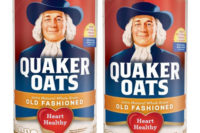Fiber, Whole Grain Formulations
Manufacturers are beginning to recognize that not all whole grains are equal when it comes to fiber content.

Nutritionists and other health experts are encouraging and teaching consumers about healthier food choices in their daily diets. Of course, one important change is to make sure that whole grains account for half of daily grain intake.
Meanwhile, many consumers assume a product with whole grains also will have increased fiber content -- when compared to a product made without whole grains. However, this is not always the case.
That is why bakers also need to learn more about this important topic. As consumers alter their diets, bakers face new challenges when formulating whole-grain-based bakery foods. Increasingly, product success will mean selecting just the right whole grains for just the right product application. Manufacturers also are beginning to recognize that not all whole grains are equal when it comes to fiber content.
Understandably, bakers are looking for ways to increase the overall fiber content when whole grains alone are not enough. Consider the example of a manufacturer developing a product to achieve 8-16g of whole grains per serving and qualify for one of the Whole Grains Council’s Whole Grain Stamps. These manufacturers typically want to reach desired fiber content to qualify for fiber claims, as well.
Depending upon the whole grains selected, bakers may find meeting the desired fiber content to be a challenge. It’s here that Fibersol dietary fibers can solve the dilemma and boost a finished product’s fiber content.
“Manufacturers who add Fibersol can easily increase the fiber content of a product to help achieve a ‘good source’ (2.5g) or ‘excellent source’ (5g) of total fiber -- or more -- per serving,” says Käti Ledbetter, a product development scientist for ADM. “The addition of Fibersol into the product mix works in combination with the whole grains and boosts the overall fiber content to the levels consumers are looking for.”
Fibersol is an ideal ingredient to incorporate into a variety of whole-grain-based bakery applications, as it increases the fiber content of the finished product and delivers even fewer sugars and calories than carbohydrates with 4kcal/g.
“Giving the consumer better-for-you options is here to stay, and Fibersol products can help manufacturers meet this growing need,” says Ledbetter. “The addition of Fibersol into whole-grain-based applications can help close this gap and raise a product’s fiber levels to help reach desired fiber content/label claims with minimal product effects.”
Fibersol’s line of dietary fibers allows for fiber fortification with minimal formulation and process adjustments, while maintaining the desired finished product characteristics. The Fibersol line of dietary fibers bridges needs of manufacturers and consumers to help close the gap on dietary fiber intake.
Fibersol soluble dietary fibers also give manufacturers many more options beyond fiber addition. For example, Fibersol can help reduce sugar and could reduce calorie content or add finished product attributes. This might mean contributing softness in various moist and intermediate moisture foods, or adding crispiness to low-moisture foods and extend finished product shelflife.
About Fibersol
The joint venture between Archer Daniels Midland Company, Matsutani Chemical Industry Co. Ltd., and Matsutani America Inc, which officially formed May 1, 2006, supports the worldwide sales and marketing of Fibersol, a full line of soluble dietary fiber food ingredients that can be used in a variety of food and beverage applications, as well as dietary supplements.
For more information:
Looking for a reprint of this article?
From high-res PDFs to custom plaques, order your copy today!




